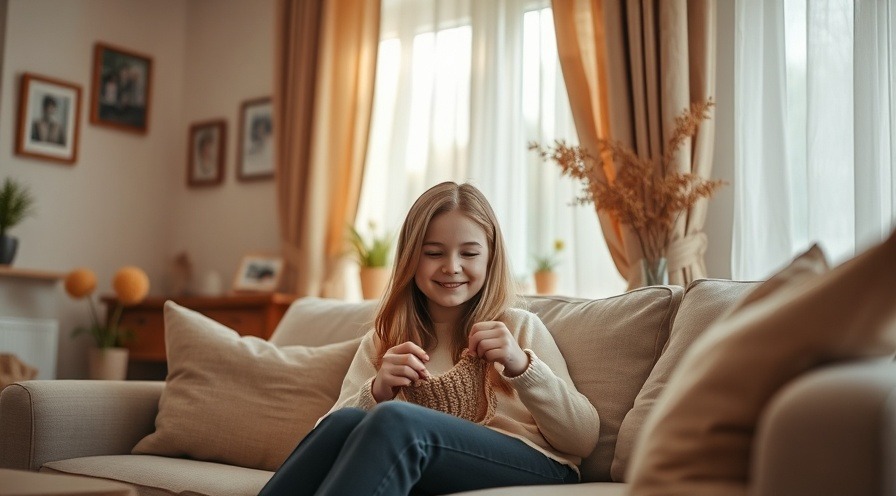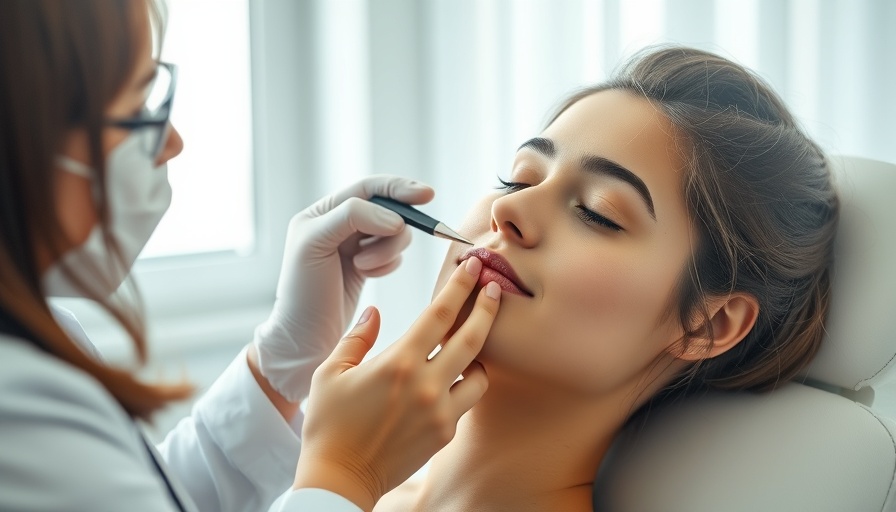
The Curious Revival of “Grandma Habits”
You might expect to find a group of teens hunched over their phones, scrolling through an endless stream of social media posts and TikTok videos. Yet, there’s a surprising trend taking shape in living rooms, backyards, and even online forums: Gen Z is picking up “grandma habits.” Think knitting, crocheting, gardening, baking—time-honored pastimes that feel worlds away from the usual digital frenzy.
Why now? According to Wendy Kimelman, a licensed therapist specializing in somatic therapy and eating disorders, teens today are grappling with a steady onslaught of online stimuli—enough to leave even the most tech-savvy adolescent feeling frazzled. In a culture driven by likes and instant notifications, “grandma habits” are quietly emerging as a refreshing alternative.
“They’re process-driven,” Kimelman notes. “These tasks have steps that slow us down and bring calm, which helps counteract the endless digital stimulation teens face.”
Think of it as the ultimate detox from doom-scrolling. These comforting, grounding activities tap into something deeply human: the desire to create tangible results and connect with simpler rhythms of life.
The Digital Stress Epidemic
We live in an era of constant connectivity—teens especially. School announcements roll in through text messages and apps, social media updates never pause, and streaming platforms serve up content 24/7. For younger minds, still developing emotional regulation and decision-making skills, this relentless flow can be as overwhelming as it is mesmerizing.
While technology can be an incredible tool (especially when it opens doors to new ideas, communities, or remote counseling services), it also has a dark side. Teens often measure themselves against the perfection of curated online personas, fueling anxiety and self-doubt. All that scrolling also chips away at their attention span: the minute a conversation or activity becomes dull, the phone is right there to fill the gap.
“Our devices crave our attention,” Kimelman explains. “If you’re not careful, every idle moment becomes an invitation to scroll, click, or compare, and that feeds into stress.”
It’s no surprise, then, that anxiety rates among adolescents have skyrocketed. With near-constant pings and notifications, the teenage brain rarely gets a break. So when young people discover something that invites them to slow down, focus, and unwind, it feels like a genuine relief. And that’s where grandma habits step into the spotlight.
Rediscovering Simplicity: What Are “Grandma Habits”?
So what exactly qualifies as a “grandma habit”? Picture your grandmother’s kitchen on a lazy Sunday afternoon—fresh dough rising in a warm oven, knitting needles clicking away on a nearby chair, or a well-tended garden blooming with herbs and tomatoes. The core of these activities lies in a methodical, step-by-step process that requires patience and presence.
Knitting or Crocheting: Each stitch loops into the next, slowly forming something beautiful you can actually hold and wear.
Gardening: From planting seeds to watering daily, you see nature’s progress in real time, teaching lessons in nurturing and delayed gratification.
Baking & Cooking: Measuring ingredients, kneading dough, timing the rise—all of it fosters a deep, sensory connection to what we eat.
For modern teens, these practices might feel a bit quaint at first—but that’s the point. There’s no scoreboard, no frantic “ping” telling them they’ve missed something. Instead, they discover the calming reward of working toward a tangible outcome.
“Some teens crave that sense of accomplishment,” Kimelman says, “but in a healthier, more grounded way than racking up likes or followers.”
By embracing a slower process, they gain the space to breathe, reflect, and feel genuinely proud of what they’ve made—a stark contrast to the fleeting hits of validation social media often provides.
Why These Old-School Activities Work for Modern Teens
One of the biggest draws of these so-called “grandma habits” is their capacity to anchor teens in the present moment. The methodical nature of knitting or the careful planning behind gardening leaves little room for mindless scrolling. Each action—stitching a row, watering a seedling—commands attention in a slow, natural rhythm.
“For teens immersed in constant phone alerts, these hobbies provide a calming sensory focus,” explains Kimelman. “They can feel their bodies relax, their thoughts settle, because they’re creating something tangible with their own hands.”
In a world where social media rewards perfection and instant gratification, the gentle pace of these activities fosters self-compassion. Teens quickly learn that the scarf they’re knitting won’t be perfect after a few stitches, and the cookies they bake might come out a little lopsided. Rather than seeking endless validation in the form of likes, they’re rewarded by the simple joy of creation.
Another hidden benefit is the low-stakes social aspect. When kids bake with siblings, knit alongside friends, or garden with grandparents, they’re building real-life connections. There’s no scrolling newsfeed and no fear of missing out—just time spent learning and sharing together. It’s an antidote to the curated images often found on social media, reminding teens that genuine human bonds don’t need a digital audience to be meaningful.
Real-Life Anecdotes & Success Stories
Take, for instance, a high-schooler named Sarah (not her real name), who learned to crochet from her grandmother during the pandemic. Initially, she saw it as a quirky pastime—until she realized how much it helped her manage stress. By focusing on each stitch, Sarah found her racing thoughts began to slow down. She even started teaching a couple of her friends, turning Friday nights into a mini “crochet club” instead of another mindless group chat.
“Some of my clients come in raving about how baking or gardening has actually reduced their anxiety,” Kimelman shares. “They’re tired of feeling so wired to their phones—and these simple activities are giving them a natural way to decompress.”
Stories like Sarah’s underscore how deeply these “grandma habits” can resonate with teenagers. It’s not about disowning technology entirely—it’s about finding a rhythm that balances the modern with the timeless.
Practical Tips for Encouraging “Grandma Habits”
Start Small
Trying something new doesn’t have to be a major commitment. Begin with a simple project like a beginner’s knitting kit or a small herb garden in a windowsill planter. Short, manageable goals help teens see quick progress and feel successful.Make It Social—But Mindful
While these activities are a fantastic way to decompress solo, they can also bring people together. Encourage a family bake-off, or invite friends over for a knitting circle. It’s a far cry from endless scrolling, yet still offers that communal vibe teens crave.Integrate Technology Wisely
Yes, these hobbies are meant to be an escape from screens—but tech can still provide a little help. YouTube tutorials can teach the basics, and Pinterest boards offer plenty of craft inspiration. Just make sure notifications are off to maintain that Zen state.
The Bigger Picture: Reinventing Youth Wellness
These grandma habits aren’t just quaint pastimes; they represent a broader shift toward reclaiming balance in a world saturated by digital noise. Teens who learn to bake, stitch, or grow their own vegetables are discovering that not every solution to stress has to be high-tech or expensive. Often, the best solutions connect us to our bodies, our senses, and each other.
“We used to see these traditions as just ‘something Grandma does,’ but really, they’re tools for emotional well-being,” Kimelman points out. “They offer a break from the demands of social media without isolating teens from their peers. It’s the best of both worlds.”
Parents, educators, and mental health professionals are increasingly recognizing the value of these hands-on activities. In an era when adolescent anxiety and depression rates are climbing, perhaps the most revolutionary act is to slow down.
The Future of Old-School
It’s easy to assume that modern teens, raised in the era of smartphones, wouldn’t care about something as old-fashioned as quilting or growing roses. Yet here they are, seeking refuge in the slower, more deliberate rhythms of “grandma habits.” It’s a testament to our collective need for grounding—proof that sometimes, forward progress means looking back and rediscovering what has always worked.
Whether they’re kneading bread dough, picking fresh herbs, or teaching themselves to knit via a 1970s instruction booklet, today’s teens are forging a new path to mental wellness that merges the old with the new. As Kimelman so aptly says, “Sometimes the best technology detox is found in the simplest human traditions.”
So, if you notice a teen you know swapping their phone for yarn or turning off notifications to bake bread from scratch, don’t be surprised. They’re likely on to something—and they might just be modeling a lifestyle that helps the rest of us remember the gentle power of slowing down.
 Add Row
Add Row  Add
Add 





Write A Comment